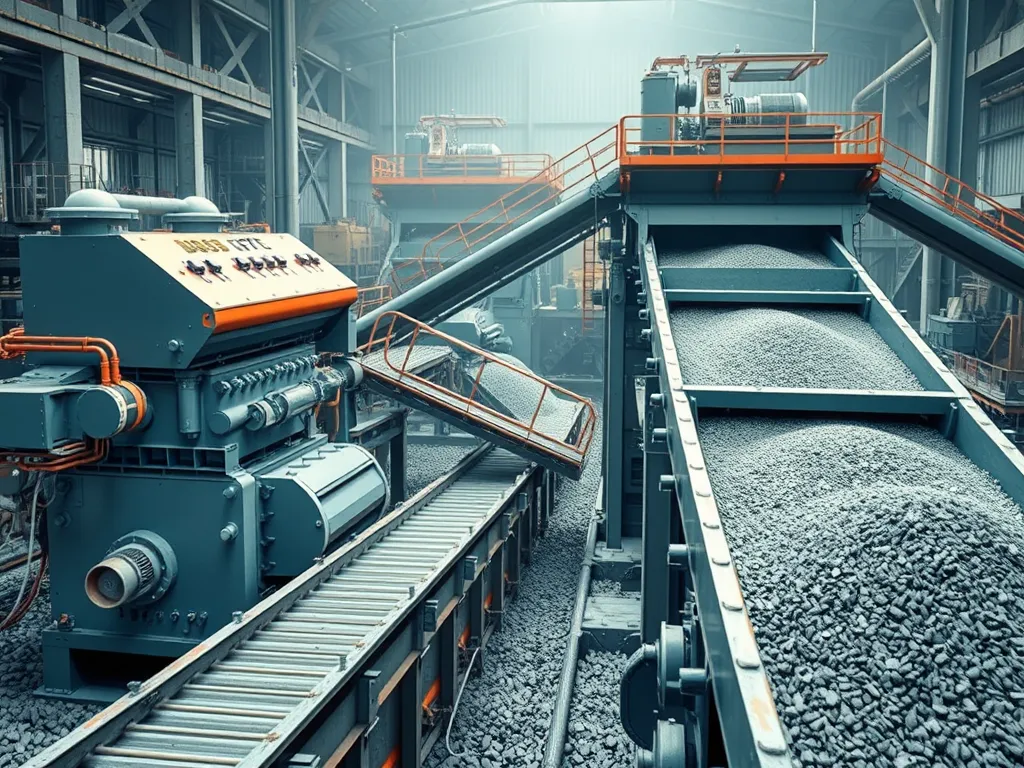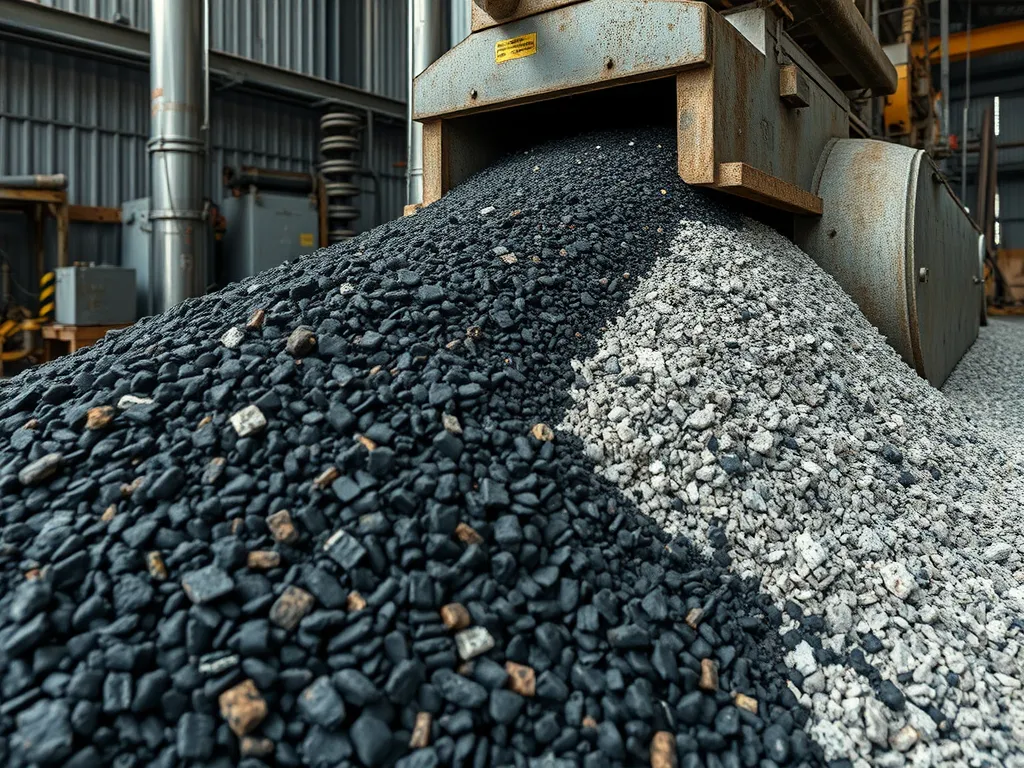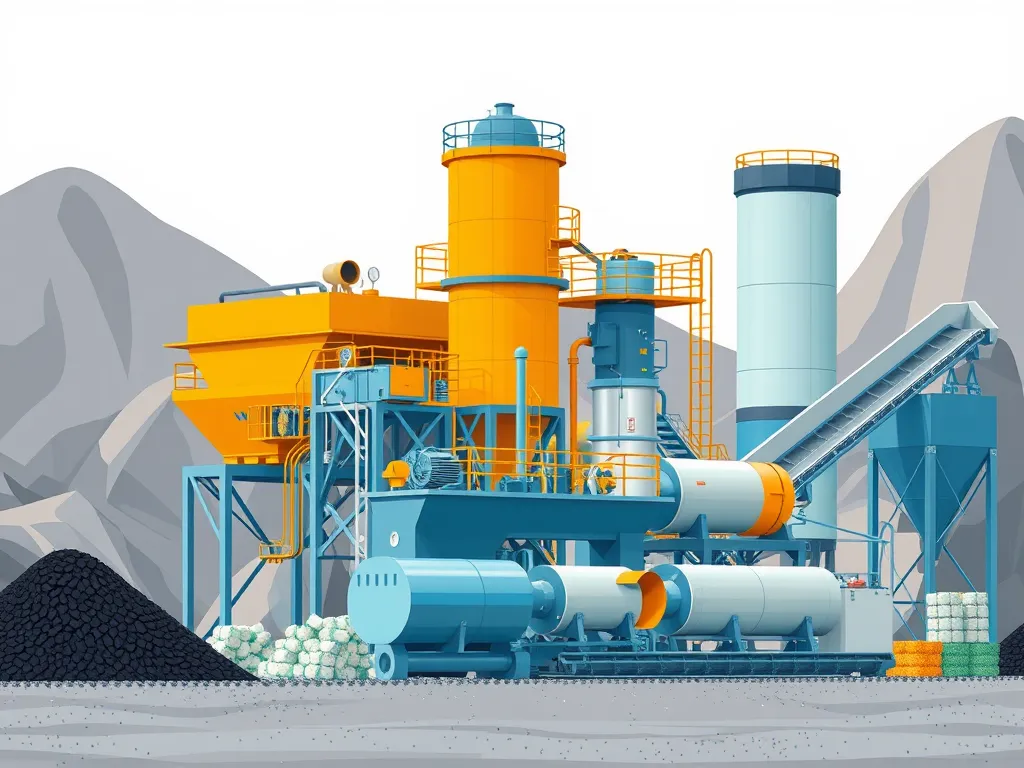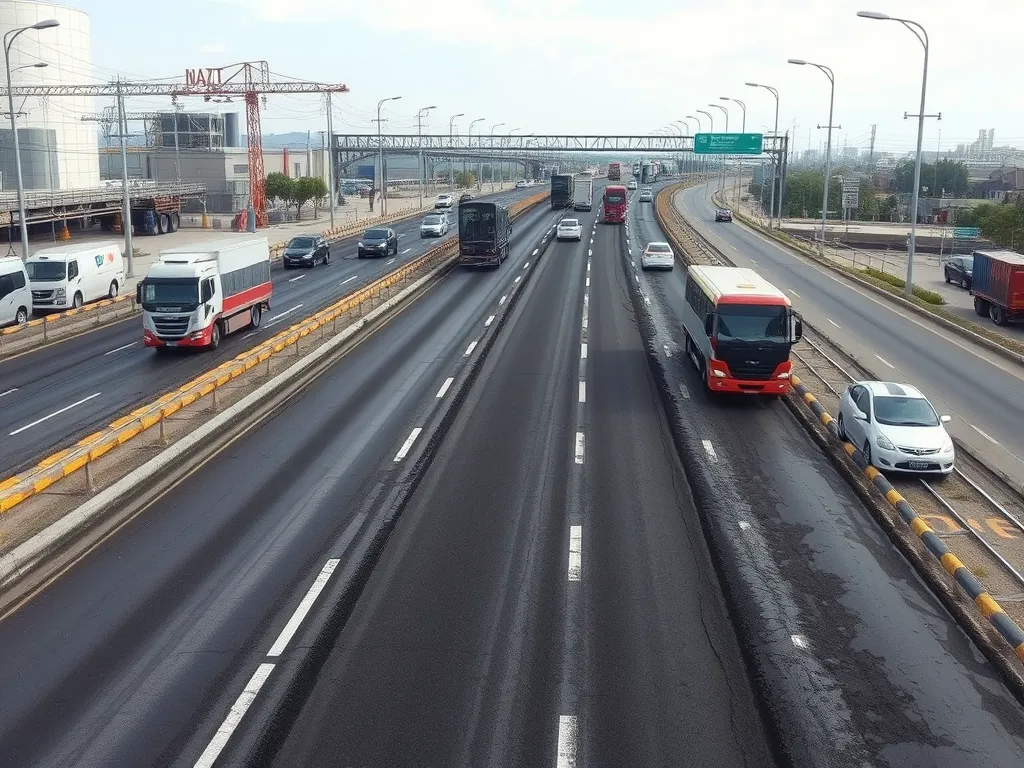Bitumen Recycling Methods: Sustainable Processes for Asphalt Reclamation
Published on: September 26, 2025 | Last Updated: April 14, 2025
Written By: George Voss
Bitumen recycling methods reuse asphalt binder from demolished roads through techniques like Hot In-Place Recycling (HIR) and Reclaimed Asphalt Pavement (RAP) processing. These methods heat or treat old pavement to reactivate the bitumen, then combine it with fresh aggregates or additives. Recycling asphalt saves 21 gallons of crude oil per ton of mix, reduces CO2 emissions by 20%, and meets ASTM D4886 specifications for binder quality. Over 90% of US asphalt gets recycled annually, making it America’s most-reused construction material.
This article explains how modern bitumen recycling works. Compare HIR, Cold In-Place Recycling (CIR), and cold mix methods with real project examples. Review cost data showing 30-50% savings over new asphalt. Learn how PG (Performance Grade) binders enhance recycled mixes and why RAP content varies from 10% to 50% in highways. We’ll also cover environmental regulations, infrared heater technology, and limitations for high-traffic zones.
Contents
- What is Bitumen Recycling in Asphalt Production?
- Primary Methods for Recycling Asphalt Bitumen
- Can Bitumen Be Reused in New Asphalt Mixes?
- Is Asphalt 100% Recyclable?
- Key Steps in the Bitumen Recycling Process
- Environmental Benefits Of Recycling Asphalt Bitumen
- Cost Considerations for Asphalt Recycling Projects
- Common Downsides Of Recycled Asphalt Mixes
- Proper Disposal Of Bitumen Emulsion Waste
- Frequently Asked Questions (FAQs)
- Closing Thoughts
- Useful References for You:
What is Bitumen Recycling in Asphalt Production?
Bitumen recycling reuses old road parts in new asphalt. It takes old asphalt (RAP) from roads or lots. RAP has rocks and bitumen, the black glue in asphalt. Reusing RAP cuts new bitumen use by up to 25%.
The bitumen recycling process heats RAP to 300°F. This melts old bitumen to bond with new mix. Additives like PG binders (asphalt glue) boost stick power. Some plants use foaming tech to lower heat needs by 20%, saving fuel.
Recycled bitumen works for roads, lots, paths. Costs less than new mix but meets specs. Using RAP cuts CO2 by 1.5 tons per 100 tons of mix. Plants blend up to 40% RAP with fresh stuff.
Next, let’s break down the main ways to recycle asphalt bitumen.
Primary Methods for Recycling Asphalt Bitumen
Modern bitumen recycling technologies transform aged pavement into reusable material through precise methods. These processes balance performance needs with environmental responsibility.
Hot In-place Recycling (HIR)
HIR restores roads without removing existing layers. It retains 90-100% of original bitumen while fixing surface defects.
Process Steps
Infrared heaters soften the asphalt at 300°F. Scarifiers break up the material. Fresh binder or rejuvenators are added before recompacting with vibratory rollers.
Equipment Used
Specialized HIR trains include heating units, milling machines, and pavers. Brands like Caterpillar and Roadtec dominate this niche.
Ideal Applications
Best for highways with rutting or cracking up to 2 inches deep. Saves 40% costs compared to full-depth replacement.
Cold In-place Recycling (CIR)
CIR uses ambient temperatures, cutting energy use by 60%. Emulsified bitumen or foamed asphalt binds milled material.
Process Steps
Cold planers grind pavement to 6-inch depths. A recycler mixes in 2-4% new binder. The mix is graded and compacted immediately.
Equipment Used
Wirtgen cold recyclers and standard pavers handle CIR. Portable labs test mix consistency during operations.
Ideal Applications
Rural roads, parking lots, or bases for new asphalt. Not suited for areas with heavy truck traffic.
Hot-mix Asphalt Recycling
This method blends reclaimed asphalt pavement (RAP) with virgin aggregates at asphalt plants.
Integration with Fresh Asphalt
RAP content ranges from 10-30%, depending on PG binder grades. High-polymer mixes allow up to 50% recycled material.
Temperature and Mixing Requirements
Heated to 300-350°F in drum plants. Double-barrel mixers ensure even distribution of aged and new bitumen.
Cold Mix Asphalt Recycling
Uses emulsified bitumen to coat aggregates at 70-120°F. No heating reduces emissions by 80%.
Low-Temperature Processing
Patented additives like Evotherm maintain workability. Stockpiled cold mix stays viable for 6-9 months.
Uses in Temporary Repairs
Fills potholes, utility cuts, or shoulder edges. Costs $18-$25 per ton versus $50+ for hot mix.
Reclaimed Asphalt Pavement (RAP) Processing
RAP forms the backbone of most bitumen recycling methods. Proper prep ensures consistent quality.
Crushing and Screening Techniques
Impact crushers reduce chunks to 3/4” minus. Screens sort material by gradation. Magnetized belts remove stray metals.
Percentage Blending in New Mixes
State DOTs allow 15-40% RAP based on traffic loads. Superpave specs require testing binder compatibility first.
With these methods established, evaluating bitumen reuse potential in fresh mixes becomes critical.

Can Bitumen Be Reused in New Asphalt Mixes?
Yes, old bitumen gets new life in fresh asphalt mixes. Reclaimed asphalt pavement (RAP) holds aged bitumen that still works when mixed right. Heating RAP at 250-300°F reactivates the binder, letting it bond with new aggregates and fresh bitumen. Most states allow 20-40% RAP in road projects. Some plants push to 50% with advanced gear.
Hot-mix plants blend RAP with virgin materials at high heat. Cold recycling uses emulsions or foamed bitumen to coat reused chunks. Both methods cut new bitumen needs by 15-30%. Tests like ASTM D4887 check recycled binder quality. PG grading ensures it meets local weather demands – think PG 64-22 for freeze-thaw zones.
Additives boost performance. Rejuvenators add oils lost during aging. Polymers improve stretch. Warm-mix tech lets plants run 50°F cooler, saving fuel. A 30% RAP mix can drop costs $8-$12 per ton. But bad milling or wrong temps cause weak spots. Proper screening and heat control prevent cracks or raveling.
But how much asphalt can actually be recycled? Let’s break down the facts.
Also See: Comparison Of Heat Absorption Between Asphalt and Concrete
Is Asphalt 100% Recyclable?
Asphalt pavements rank among the most recycled materials globally, with near-total recyclability when using modern bitumen recycling methods. The binder (bitumen) retains its chemical properties through multiple life cycles, allowing reuse in new mixes. Over 95% of asphalt’s components – aggregates and bitumen – can be recovered through processes like hot in-place recycling or RAP (Reclaimed Asphalt Pavement) processing.
Bitumen recycling technologies reactivate aged binder by blending it with rejuvenators or fresh bitumen. This restores flexibility and adhesion, critical for pavement performance. Contaminants like motor oil or road salts may limit full recyclability in rare cases, requiring partial removal of compromised material. Most projects achieve 30-50% RAP integration in new mixes without sacrificing durability.
Three factors determine 100% recyclability: – Pavement composition (virgin aggregates bond better than weathered ones) – Bitumen aging level (severely oxidized binder needs more additives) – Processing precision (consistent crushing and screening prevent material inconsistencies)
High-traffic highways sometimes cap RAP content at 20-25% to meet strict load-bearing specs. Urban roads and driveways frequently use 60-100% recycled asphalt with comparable lifespan to virgin materials. Advances in polymer-modified binders now enable higher RAP percentages even in extreme climates.
To maximize recyclability, professionals follow systematic steps to recover and reprocess asphalt components. Proper techniques ensure bitumen retains its value across decades of reuse.
Next, we break down the precise stages that transform old pavements into reusable materials.

Key Steps in the Bitumen Recycling Process
Bitumen recycling transforms old asphalt into new paving material through systematic steps. This approach cuts material costs by 15-40% while conserving natural resources.
Collection and Storage Of Old Asphalt
Workers mill worn roads or collect demolition scraps using cold planers or excavators. Stockpiles stay at sites or plants with strict moisture control. Proper storage stops clumping, maintaining RAP (Reclaimed Asphalt Pavement) quality. Sites track RAP sources to avoid contamination from dirt or non-asphalt debris.
Crushing and Screening Aggregates
Jaw crushers or impactors break RAP into 0.5-1.5-inch chunks. Screening separates particles by size for mix consistency. Advanced plants use infrared scanners to spot foreign materials. Output gradation must match AASHTO T27 standards, allowing up to 5% variance in sieve analysis for batch accuracy.
| Screen Size | Typical RAP Passing (%) |
|---|---|
| 1″ | 95-100 |
| 3/8″ | 70-85 |
| No. 4 | 45-60 |
Blending With Fresh Bitumen and Additives
RAP binds with 2-5% fresh PG 64-22 or PG 76-16 bitumen in drum plants at 300-325°F. Rejuvenators like tall oil or soybean derivatives restore maltenes in aged bitumen. Polymer modifiers boost flexibility for high-traffic zones. Mix designs follow Superpave specs, allowing 15-30% RAP in surface layers and up to 50% in base courses.
Up next: How bitumen recycling impacts our planet’s resource cycles and cuts carbon output by millions of tons annually.
Environmental Benefits Of Recycling Asphalt Bitumen
Bitumen recycling methods slash environmental strain while maintaining pavement performance. These processes tackle two critical issues: shrinking landfill overload and cutting greenhouse gas emissions linked to asphalt production.
Reduction in Landfill Waste
Every year, U.S. construction generates 90 million tons of asphalt waste (EPA 2023). Recycling asphalt bitumen diverts 95% of this material from landfills. Each ton repurposed preserves 0.25 cubic yards of landfill space. This directly reduces soil contamination risks from bitumen leaching and aggregate breakdown. Recycled pavements also prevent polycyclic aromatic hydrocarbons (PAHs) – common in aged binders – from entering groundwater systems.
Lower Carbon Footprint
Producing virgin bitumen emits 48 kg CO2 per ton. Bitumen recycling technologies cut this by 52% through reduced heating demands. Cold in-place recycling (CIR) methods alone lower energy use by 30% compared to traditional hot-mix asphalt (NAPA 2022). Warm-mix additives in modern plants enable mixing at 250°F instead of 300°F, trimming fuel consumption by 15%. For every 10% RAP (Reclaimed Asphalt Pavement) blended into new mixes, projects save 1.5 gallons of diesel per ton produced.
While these ecological gains are significant, they also pair with measurable economic advantages. Up next: how bitumen recycling methods impact project budgets from material costs to equipment investments.

Cost Considerations for Asphalt Recycling Projects
Balancing budgets demands careful evaluation of how bitumen recycling methods impact project expenses. Two factors dominate: material savings and operational costs.
Savings on Raw Materials
Bitumen recycling slashes material costs by up to 40%. Reclaimed Asphalt Pavement (RAP) replaces 20-30% of virgin aggregates and binders in typical mixes. At $18-$25 per ton for processed RAP versus $45-$60 for new bitumen, projects reuse materials without sacrificing performance. Additives like recycling agents (2-4% by weight) reactivate aged binders, further trimming expenses.
- RAP reduces bitumen demand by 1.2M tons annually in the U.S.
- Cold central plant recycling cuts aggregate costs 50% vs hot-mix methods
Labor and Equipment Expenses
Bitumen recycling technologies require specialized gear but offset this through faster workflows. Hot in-place recycling uses infrared heaters ($250-$400/hr) and reclaimer pavers, while cold methods deploy cold planers ($180-$300/hr) and stabilization equipment. Labor crews shrink 15-20% compared to full-depth reconstruction.
- Hot mix plants with RAP capabilities use 12-18% more fuel
- Cold recycling eliminates 3-5 days of curing time per mile
While bitumen recycling methods lower upfront costs, material quality challenges persist. Next, we examine performance tradeoffs in high-stress scenarios.
Common Downsides Of Recycled Asphalt Mixes
While bitumen recycling cuts costs by 20-30% and lowers harm to earth, some limits exist. These factors shape where and how reused asphalt works best.
Changes in Mix Quality
Old asphalt comes from roads, lots, or paths with different wear. This leads to shifts in rock size, binder grade, and junk levels. Tests like PG grading (performance-graded binders) spot weak spots, but not all plants run these checks.
| RAP Factor | Range |
|---|---|
| Binder Content | 3.5-5.5% |
| Rock Size | 1/4″ to 2″ |
| Junk Levels | Up to 8% |
Mixes with over 25% RAP may need new binders or additives to meet specs. This adds steps and cost.
Heavy Use Limits
Reused binders age and lose stretch. In high-stress zones like truck lanes or busy roads, this raises risks of cracks or ruts. Fresh mixes handle 10,000+ cars per day better.
PG 64-22 binders (common in RAP) fail in hot zones needing PG 70-28 grades. States like Texas limit RAP to 15% on interstates. Full-depth reuse suits local roads with under 2,000 cars daily.
Handling these downsides needs smart plans. Next, we’ll look at safe ways to deal with waste binders that can’t be reused.

Proper Disposal Of Bitumen Emulsion Waste
Managing leftover bitumen emulsion demands precision. This sticky byproduct forms during recycling processes like cold in-place recycling or RAP processing. Improper handling risks soil contamination and regulatory penalties.
Regulatory Guidelines
The EPA classifies bitumen waste under Resource Conservation Recovery Act (RCRA) guidelines if hazardous characteristics emerge. States like California enforce stricter limits: 5 mg/L total petroleum hydrocarbons (TPH) in leachate via TCLP testing. Non-compliant disposal triggers fines up to $75,000 per violation. Always check local stormwater permits when washing equipment exposed to emulsions.
Safe Handling Practices
Use polymer-lined containers to store waste emulsions, preventing leaks. Maintain storage temperatures below 140°F to avoid binder separation. For spills, deploy absorbent pads made from recycled cellulose – never rinse with water. Contractors must wear nitrile gloves and ANSI-approved respirators when handling aged emulsions containing volatile compounds.
Recycling centers now accept bitumen emulsion waste for reuse in cold mix asphalt or chip seal treatments. This cuts raw material costs by 18-22% per ton while meeting AASHTO M 140 specs.
Curious about maximizing bitumen reuse? The next section tackles frequent questions on performance limits and multi-cycle recycling potential.
Frequently Asked Questions (FAQs)
Can Bitumen Be Reused Multiple Times?
Yes, bitumen can be reused multiple times through various recycling methods. When properly processed, aged bitumen maintains its chemical properties and effectiveness, allowing it to be reclaimed and repurposed for new asphalt mixes. This recyclability enables sustainable practices in the construction industry and helps reduce the overall demand for virgin materials.
How Does Recycled Asphalt Perform in Extreme Weather?
Recycled asphalt, particularly when enhanced with high-performance additives or modified binders, can perform well in extreme weather conditions. The incorporation of rejuvenators and polymer modifiers helps maintain the flexibility and adhesion of the binder, essential for coping with temperature fluctuations. However, the performance can vary based on the percentage of recycled content and the specific mix design used.
What Are the Common Contaminants in Recycled Asphalt?
Common contaminants in recycled asphalt can include dirt, soil, non-asphalt debris, and oils from vehicles. These contaminants can affect the quality and performance of the recycled mix if not properly managed during the recycling process. Techniques such as screening and magnetic separation are employed to minimize contamination in reclaimed asphalt pavement (RAP).
Are There Different Standards for Recycled Asphalt Quality?
Yes, recycled asphalt must meet specific standards depending on local regulations and specifications. For instance, many states adhere to the Superpave system, which provides guidelines for the quality of both virgin and recycled asphalt. Testing methods, such as those outlined by ASTM and AASHTO, ensure that recycled mixes achieve the necessary performance criteria for durability and safety.
What is the Impact Of Bitumen Recycling on Local Economies?
Bitumen recycling positively impacts local economies by reducing material costs, creating jobs in recycling operations, and decreasing the need for new asphalt production. These factors can lead to lower overall project costs while promoting sustainable practices that benefit the community and the environment.
How Can Construction Companies Optimize Their Bitumen Recycling Processes?
Construction companies can optimize their bitumen recycling processes by investing in advanced recycling equipment, maintaining stringent quality control measures, and training their workforce on best practices. Regular testing of recycled materials and adhering to mix design specifications can also help ensure high-quality end products.
Closing Thoughts
Bitumen recycling plays a vital role in sustainable asphalt production. Each method—whether hot in-place, cold in-place, or hot-mix recycling—offers unique advantages, from cost savings to lower environmental impact. Understanding these methods enhances decision-making for road maintenance and construction projects.
While challenges exist, such as variability in material quality and some limitations in high-traffic applications, the benefits of recycling far outweigh the drawbacks. It not only reduces landfill waste but also contributes to a lower carbon footprint, proving beneficial for both the environment and the economy.
Make sure to explore Asphalt Calculator USA for more insights and resources on bitumen recycling and related topics. Together, we can promote eco-friendly practices in asphalt production.
Useful References for You:
- Transportation Research Board (TRB, Peer-Reviewed Research & Circulars)
- Cold recycling with foamed bitumen | Wirtgen
- Why there are challenges in exporting a viable bitumen recycling process throughout Europe.
- Bitumen roofing can be recycled… but isn’t | News | CORDIS | European Commission
- Recycling process for bituminous waste products | Centexbel – VKC


